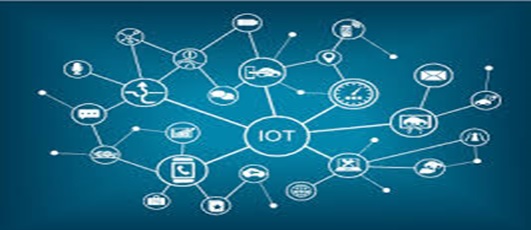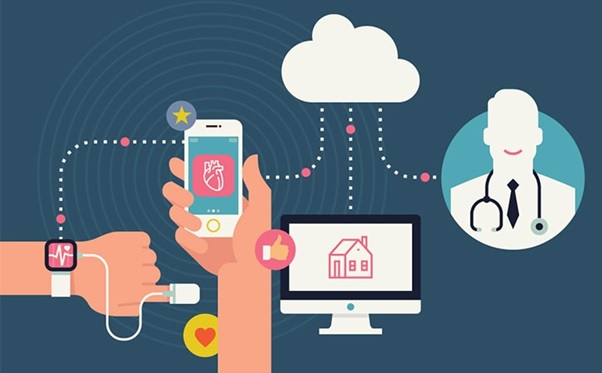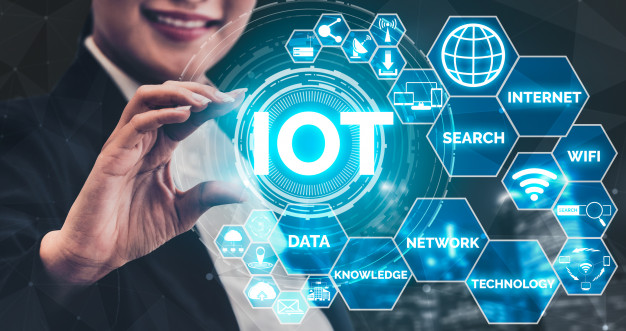2021 will be a challenging experience for many industries, but IoT is already playing an active role in developing business and customer inclinations. From healthcare and retail, face and voice recognition are other essential elements used for biometric authentication. For example, AI-based facial recognition is helpful in several areas, such as detecting whether strangers are wearing face masks or not.
AI is gaining decision-making capabilities as smart homes, smart cities, self-driving cars, and manufacturing make use of the technology. But human supervisors and data scientists are needed to help maintain the system and solve non-trivial tasks. Learn more about how AI software is built.
By 2025, there could be more than 30 billion IoT internet connections, equating to about four devices per person. According to McKinsey, total revenue from 5G IoT modules in the B2B sector will grow from around $180 million to nearly $10 billion by 2030.
The value of the technology depends on various factors: the cost of infrastructure, the cost of data transmission, and whether 5G speeds are needs for specific use cases. Smart cities, transport, and industrial IoT will be among the first technologies to benefit from this technology. In addition, to automotive and manufacturing, all industries will become smarter with technologies like IoT. Failure to compete in this area could lead to significant losses.
The global pandemic was a significant obstacle to IoT growth in 2020. As a result, while the November 2019 forecast predicted IoT spending to grow by 14.9% in 2020, it only managed to increase by 8.2%. However, the International Data Corporation expects that IoT will regain momentum this year and achieve 11.3% growth between 2020 and 2024.
Recent shortages of semiconductors and other IoT components will challenge IoT growth in 2021. As a result, manufacturers will need to adapt quickly to maintain momentum and remain competitive. While the shortage will not last very long, it will affect projects in the short term.
Judging by the technologies showcased at the event, it seems that the Internet of Things is far from extinct. On the contrary, with millions of people in the US at home during the pandemic, demand for innovative home products has increased. As a result, shipments of do-it-yourself intelligent home products are up 9%, with 99 million units shipped, worth $15 billion (up 3%).
Let's look at the different trends that will be most relevant for IoT in 2021 and beyond.
| Trend 1: AIOT - AI and IoT
By 2021, the number of devices combined with the IoT will reach 46 billion. Most of these devices will have only a single processor and a minimal amount of memory. As a result, the Internet of Things will permeate our society.
The volume of data being collected from IoT devices has reached unprecedented levels. The combination of data science and machine learning creates numerous opportunities for forwarding IoT knowledge analytics resolutions.
Big Data, AI, and IoT come collectively to collect pre-built data, create data boundaries and build AI components on top of the data. This approach will remain important in the coming years.
According to a report by Research and Markets, the value of AI and IoT will exceed $26 billion by 2025. They also show that AI will improve IoT data efficiency by 25% and industry analytics by 42%. In addition, AI will play a role in both IoT hubs and edge networks. In a corner, AI can perform predictive analytics and alert users to anomalies.
Gaining insights from data in IoT solutions is just the first step. The role of AI in IoT systems offers many more opportunities.
USING AI TO MANAGE IOT DEVICES AND PARTICIPATE IN DECISION-MAKING PROCESSES.
Imagine a factory that uses IoT-connected assembly lines to reduce manufacturing defects in the production process by using AI visual inspection for quality control. For an example where the cost of a single error is much higher, consider a self-driving car. Not only does it bring passengers safely to their destination, but it also uses this transit data to predict traffic patterns accurately. We can then use this information to build more effective roads and support the expectation.
Voice recognition and Face are other essential elements used for biometric authentication. AI-based facial recognition is helpful in several areas, such as detecting whether strangers are wearing face masks or not.
AI is gaining decision-making capabilities as smart homes, smart cities, self-driving cars, and manufacturing make use of the technology. But human supervisors and data scientists are needed to help maintain the system.
| Trend 2: Edge computing with IoT devices
The cloud and regional servers are not the only places where computing can take place. The use of remote servers can cause transmission delays. Therefore, cloud computing is not an option for implementations that require real-time computation, such as self-driving cars.
Edge IoT is used in traffic cameras for pedestrian detection, adaptive traffic lights, vehicle prioritization, parking detection, and electronic tolling. Microsoft, IBM, and Amazon have also invested heavily in edge computing technologies. As a result, the demand for intelligent IoT devices, high-speed computing, and data security has increased.
Amazon's second-generation AWS IoT Greengrass service has been rolling out, allowing developers to use Lambda features with edge devices. In addition, it will enable developers to perform machine learning and computational tasks on IoT devices.
More and more IoT solutions contain built-in AI and move some of the computation from the cloud to the end devices. The three main reasons for this are response time, cost of cloud processing, and data privacy and security. Read more about IoT development.
|Trend 3: IoT delivers a personalized experience
We've been spoiled by Google's insight into our search trends. Netflix and Spotify also have exceptional insight into our viewing and listening habits. But even these predictors can make mistakes, bringing irrelevant content to our screens. This technology is constantly being improved.
Innovative home technology is an area where personalization is essential. Technology that manages the home's daily activities requires a highly personalized experience to achieve the best customer satisfaction. At CES 2021, Samsung showed the Samsung Bot Handy and JetBot 90 AI+. Home support robots are enabled by artificial intelligence and data analytics.
The growth of AI and edge computing will help this market grow tremendously. To take innovative home technologies to the next level, AI accuracy and decision-making must improve. AI must make choices based on the homeowner's habits. Because of the personalization required, generalized data is not enough to train the neural network. Personalized information is needed. However, this information can often be very private, and users do not want to share it.
The key to this problem may lie in edge computing, where data is stored and processed locally on users' devices. It could be crucial to improving customer perception of innovative home technologies. According to Statista's 2019 report, 46% of savvy home users describe their experience as intrusive and 36% intimidating. Edge computing can help make customers feel more secure when using IoT technology in smart homes. Read the article on AI technology trends.
|Trend 4: IoT connectivity

By 2025, there could be more than 30 billion IoT internet connections, equating to about four devices per person. According to McKinsey, total revenue from 5G IoT modules in the B2B sector will grow from around $180 million to nearly $10 billion by 2030.
In July 2020, the standards body 3GPP published the latest specifications for 5G connectivity: version 16. It will have significant implications for 5G IoT, as mobile communications from embedded devices will benefit from significantly lower latency and reliability. Although 5G is still a long way from the mainstream rollout, companies may consider this relatively expensive rollout effort based on sound business plans.
Lower latency will enable IoT devices to send and receive data at unprecedented speeds. In addition, it will allow data analysis and management at a level not possible with older 4G networks.
The value of the technology depends on several factors: the cost of infrastructure, the cost of data transmission, and whether 5G speeds are needed for specific use cases. Smart cities, transport, and industrial IoT will be among the first technologies to benefit from this technology.
| Trend 5: Smart cities
According to PwC, the development of intelligent cities poised to grow over the subsequent seven years. By 2025, the business for this technology will transfer $2.5 trillion. Senior Director of Business Development & Head of Smart Cities at Qualcomm mentioned that integrated ecosystems are better targeted than standalone solutions. However, there is another challenge to overcome: new solutions usually have a legacy component that needs to be incorporated.
Innovative centers are second in line for 5G deployment after industrial IoT. It ensures a stable network with sufficient bandwidth capacity. The diversity of connectivity options for smart city solutions is one of the main problems for the technology.
Data is the most exciting element. Smart city data is primarily public and can be collected much faster than data needed for innovative home systems. Therefore, there is a possibility that AI onboard combined with IoT could prove to be a success. For example, the Crossroads and Transport Authority in Dubai has used AI to manage crowds in metro stations.
In the initial stages, AI will extract suggestions and insights from the data. As the technology improves, it will delegate more decisions in intelligent cities to artificial intelligence. It has beneficial implications for traffic management, water and flood control, and video surveillance.
As for video surveillance and streaming, there is still an issue of privacy. Explore how you can blur elements in a video stream in real-time using AI.
| Trend 6: Healthcare and IoT

The most accelerated IoT upward in 2020 was healthcare, no doubt due to the ongoing global pandemic. However, for years, IoT projects in healthcare have been challenging to implement due to the highly regulated nature of the industry and its general passive attitude.
There is increasing evidence that COVID-19 has led to a digital explosion in healthcare, especially in hospitals. For example, the US Food and Drug Administration (FDA) issued several interim policies in May to support digital devices until 2020. In addition, Germany, for the first time, allowed doctors to prescribe access to digital health apps for specific diseases (e.g., an app that helps treat anxiety disorders) in October 2020.
Control, a supply chain monitoring developer, began providing monitoring support to Pfizer and the US government for vaccine distribution in late 2020. is particularly important because we must store these vaccines held during transport with careful temperature control. With AI monitoring technologies, management was able to reduce spoilage and product loss.
One of the successful applications during the pandemic was telehealth, where a doctor treats a patient via videoconferencing. Doctors state that telehealth is often seen as only the first step towards digital diagnostics based on IoT devices that diagnose patients remotely. Several hospitals began experimenting with it in 2020. In December 2020, a video of a London surgeon performing remote surgery on a banana in California using 5G went viral.
IoT technologies will increase their presence and influence on the industry. It will happen alongside other technology trends in healthcare that bring value to patients, doctors, and management.
| Trend 7: Automotive
One sector that is seeing significant advances in IoT applications is the automotive industry. For example, firmware over the air (FOTA) enables wireless firmware updates on embedded systems. In addition, it provides a platform to perform bug fixes and replace older versions of firmware easily. Road surface condition analysis is another application where IoT can succeed in the automotive industry, especially in autonomous vehicles.
Telematics is also a severe topic of IoT in cars. Telematics turns your vehicle into an IoT device. Emergency calls, GPS, and Bluetooth, are just some of the connections that telematics enables. It is the first step in making vehicle-to-everything (V2X) technology a reality. In addition, it can enable features such as over-the-air updates.
Vehicle-to-vehicle communication is also essential for the future of autonomous vehicles. If driverless cars can communicate with each other, they can better maintain a safe distance and share other vital data.
| Trend 8: Industrial Internet of Things (IIoT)

Manufacturers want to remain competitive and are exploring applications of the Industrial Internet of Things (IIoT). Embedded edge networks are increasingly used because they can operate more efficiently while being powered by artificial intelligence.
Manufacturers want to remain competitive and are exploring applications of the Industrial Internet of Things (IIoT). Embedded edge networks are starting to gain acceptance as they can maintain higher efficiency while being powered by artificial intelligence. It is one of the many use cases for the Industrial IoT. AI's role in this area is expected to reach $16.7 billion by 2026.
Predictive maintenance is another crucial benefit that machine learning and IoT technology will enable. Using existing data, AI algorithms can identify when preventive action needs to be taken before a machine needs to be repaired.
Computer vision for visual inspection is another key technology that can reduce costs and improve efficiency. ML algorithms are more effective than humans at visual inspection, provided they have the proper training data and hardware. Companies like BMW are already using this technology to ensure quality control of their automotive components.
| The Future is IoT
Advances in IoT technology are taking us further than we could have ever imagined. While global pandemics and component shortages may slow progress quickly, it is essential to invest in these growing technologies to remain competitive for a long time. Without AI, machine learning, embedded systems, and comprehensive IoT frameworks, businesses will not keep pace in an increasingly connected world. Moreover, by leveraging these powerful technologies, companies can benefit from the intelligence, functionality, and productivity of related IoT ecosystems. If you are looking for AI developers there are many web development companies in India that may help in developing business growth.


 Table of Content
Table of Content










